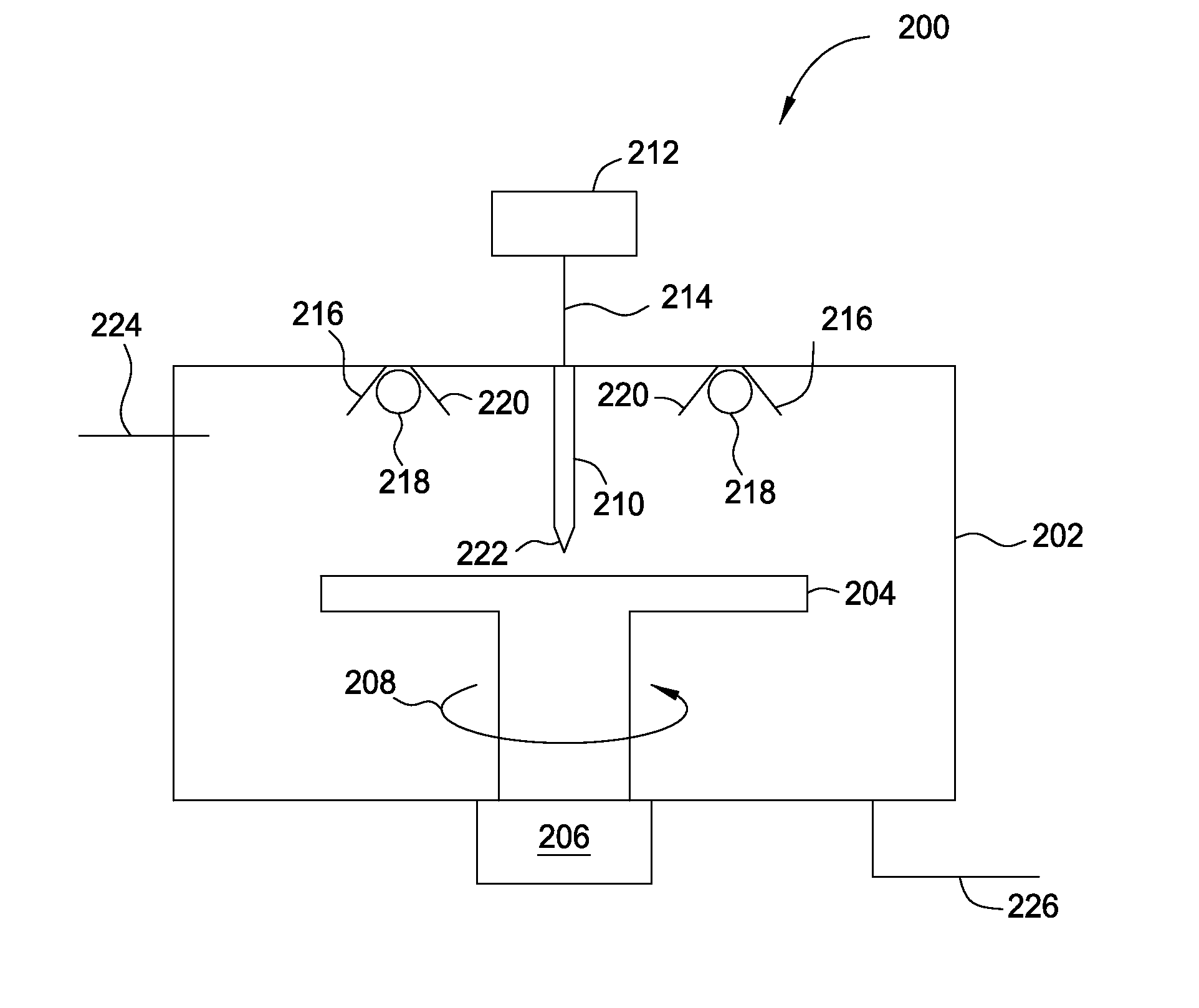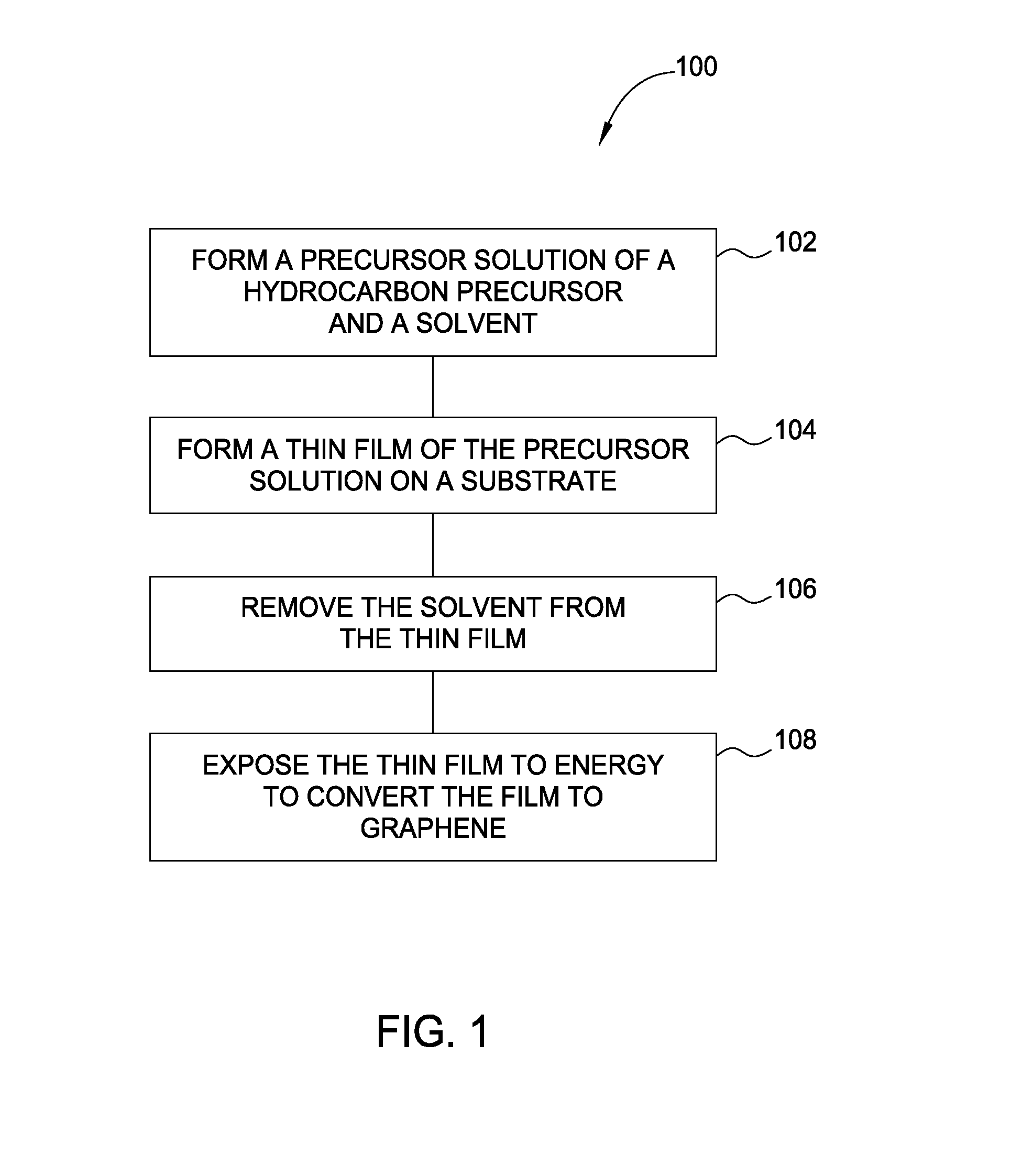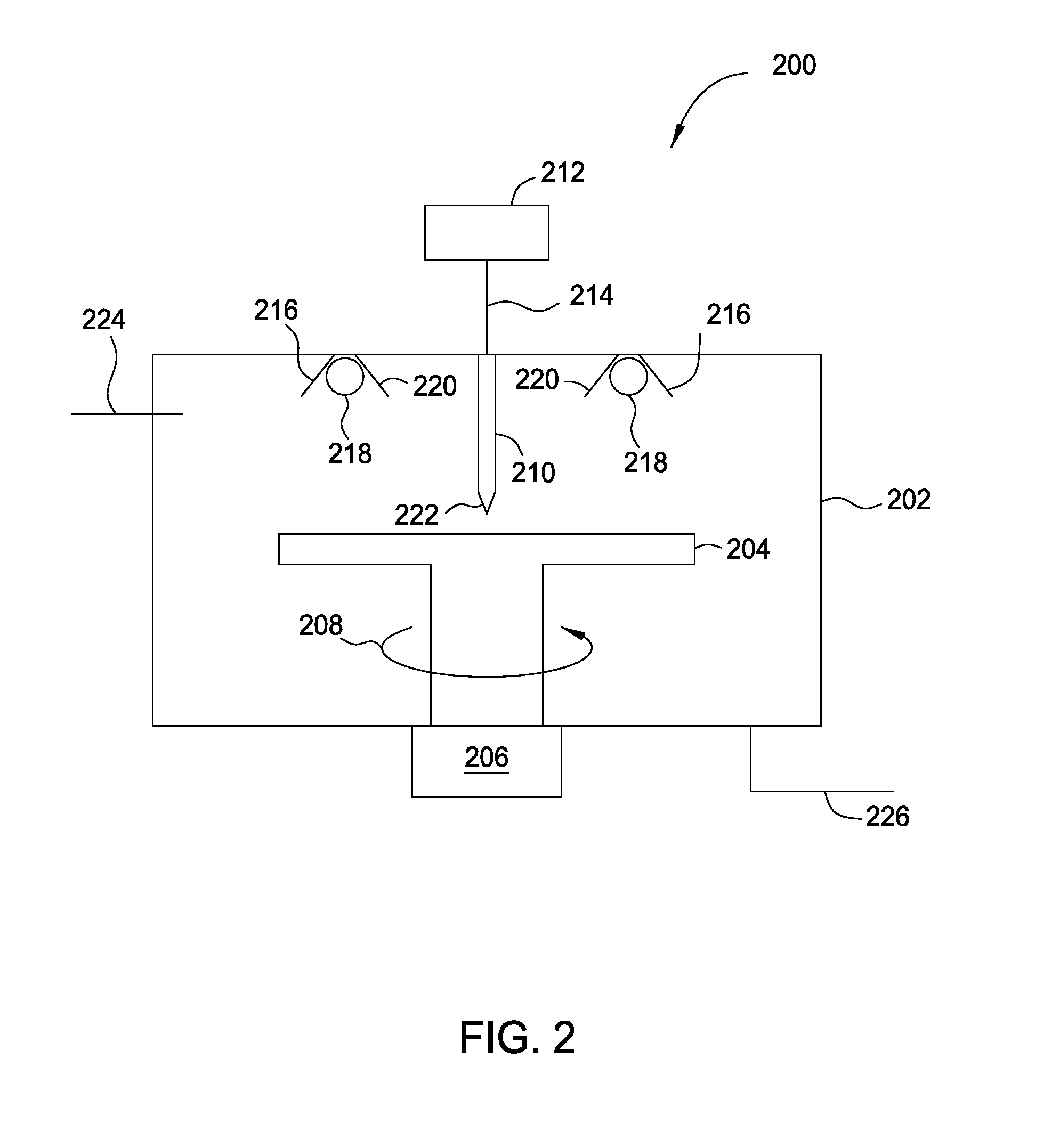Growing graphene on substrates
- Summary
- Abstract
- Description
- Claims
- Application Information
AI Technical Summary
Benefits of technology
Problems solved by technology
Method used
Image
Examples
embodiment 300
[0046]In another embodiment, an apparatus for forming a graphene film may have two chambers, each of which performs part of the graphene formation process. In one embodiment, a deposition chamber forms a thin pre-ordered hydrocarbon precursor film on a substrate, while a cure chamber exposes the film to energy to form graphene. If desired, the two chambers may be coupled to a front-end module that moves substrates into and out of the two chambers. FIGS. 3A and 3B are plan views of two embodiments 300 and 350. In the embodiment 300 of FIG. 3A, a first chamber 302 may be a deposition chamber for forming a hydrocarbon film on a substrate, and a second 304 may be a cure chamber. A substrate handling module 306 is coupled to the first chamber 302 and the second chamber 304 to load and unload substrates from the two chambers. The substrate handling module 306 may have a robot 308 to manipulate substrates.
embodiment 350
[0047]In the embodiment 350 of FIG. 3B, a first chamber 352 is included, which may be a substrate pre-treatment chamber, for example a cleaning chamber, which may be a wet clean or a dry clean chamber, as described above. Alternately, the first chamber 352 may be a deposition chamber. A second chamber 354 may be a deposition chamber, if the first chamber 352 is a pre-treatment chamber, or a drying chamber, if the first chamber 352 is a deposition chamber. In either of the embodiments 300 and 350, a staging module may be disposed between the substrate handling module 306 and the chambers, if desired. The staging module may be useful to control substrate throughput, and in some embodiments the staging module may serve as a load-lock for vacuum processes.
PUM
 Login to View More
Login to View More Abstract
Description
Claims
Application Information
 Login to View More
Login to View More - R&D
- Intellectual Property
- Life Sciences
- Materials
- Tech Scout
- Unparalleled Data Quality
- Higher Quality Content
- 60% Fewer Hallucinations
Browse by: Latest US Patents, China's latest patents, Technical Efficacy Thesaurus, Application Domain, Technology Topic, Popular Technical Reports.
© 2025 PatSnap. All rights reserved.Legal|Privacy policy|Modern Slavery Act Transparency Statement|Sitemap|About US| Contact US: help@patsnap.com



